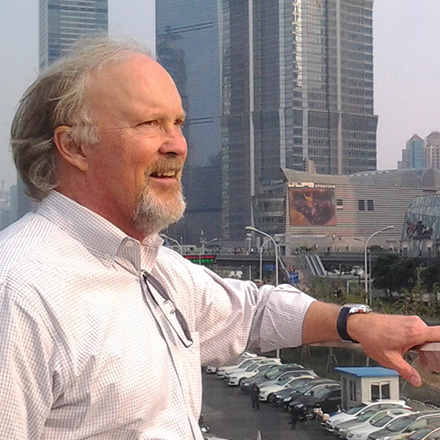
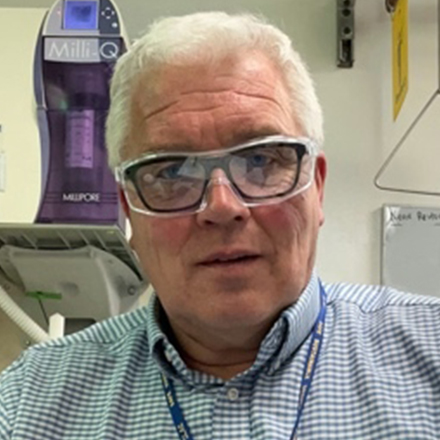
Description:
Over the past 4 decades, our knowledge about life that can flourish under extreme conditions has dramatically expanded. Psychrophiles can metabolize down to -25°C, while hyperthermophiles grow at up to 122°C. In the deep ocean, piezophiles have been found living under pressures of >110 Mpa. Life under other marginal conditions such as high salinity, extremes of pH, desiccation, and radiation, as well as combinations of stressors, has now been found.
Information about extremophiles is relevant for biotechnological applications, bioremediation, and in our search for life elsewhere in the universe. Some scientists argue that proteins adapted for high temperature or pressure will be stiffer than those that operate under freezing conditions. Others argue it is not so simple.
To settle this debate, we are planning to examine a set of small proteins called rubredoxins by multiple techniques to compare their dynamics at different temperatures. Rubredoxins (Rds) are the smallest of all Fe-S proteins – with only about 55 amino acids, their simplicity makes them an ideal system for testing theories about protein structure.
This project will involve comparing x-ray diffraction and NMR data on rubredoxins as a function of temperature, to see if the predicted differences in flexibility do in fact exist. For the student with a computational bent, normal mode and molecular dynamics calculations will assist in interpretation of the data. Depending on scheduling, there may be an opportunity to assist in diffraction experiments at the Stanford Synchrotron Radiation Laboratory, and/or in NMR experiments at UC Davis.
Qualifications:
The ideal candidate would have at least one year each of chemistry, physics, and some knowledge of biochemistry. Familiarity with Mathematica and/or bioinformatics software would be a plus but is not essential. This project is suitable for a student interested proteins and life under extreme conditions.


Description:
The production or consumption of molecular hydrogen (H2) by the enzyme hydrogenase can be as fast as by the best artificial fuel cells, but using earth-abundant iron (Fe) or nickel (Ni) instead of rare and expensive platinum (Pt). Along with their metabolic significance, hydrogenases are important targets for novel antiparasitic drugs. They also generate intense technological interest for a future hydrogen economy. In [NiFe] hydrogenases, catalysis occurs at a Ni-Fe site, while in [FeFe] hydrogenases the active site is an “H-cluster.” We plan to study both of these enzymes.
Most mechanisms for hydrogenases assume an enzyme-H2 complex as a key intermediate, although some proposals skirt the existence of a bound H2 species, with splitting to hydride and proton directly through a transition state. To settle this debate, we are planning to examine hydrogenases in cryosolvents at low temperatures, down to perhaps -100 °C. We will use photochemistry to generate H2 in the low temperature sample, and we will look for new intermediates using infrared spectroscopy.
Qualifications:
The ideal candidate would have at least one year each of chemistry, physics, and some knowledge of biochemistry. Some knowledge of basic spectroscopy would be helpful. Familiarity with Mathematica and/or molecular graphics software would be a plus but is not essential. This project is suitable for a student interested in enzymes, catalysis, and spectroscopy.
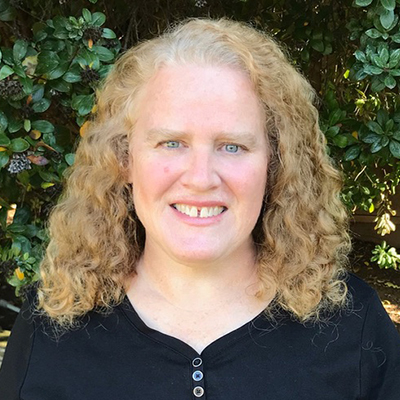
Description:
Dr. Ginny Gulick examines erosional features on Mars, looking for the tell-tale signs of running water in Mars’ geological history. Some of the meandering valley networks that lace the landscape may indicate that Mars was a warmer, wetter world billions of years ago. But other features, including gullies found around many impact craters and valley walls, may be evidence of water that flowed on the martian surface more recently.
Dr. Gulick uses stereo images and Digital Terrain Models (DTMs) from Mars-orbiting cameras including HiRISE, CTX, and HRSC to look for features caused by flowing water (“fluvial” features) or by heated groundwater (“hydrothermal” features). The current project is focused on understanding gully formation in Mars’ more recent geological history, by studying their 3D slope morphology, their spatially-associated landforms, and their topographic and environmental settings. However, we are also interested in understanding the formational environments of channels, valleys, and paleolakes throughout Mars’s geological history. We will use information from terrestrial analog sites, hydrologic models, and DTMs to estimate water discharges, volumes, and erosion rates to better understand the implications for paleoclimatic change.
Qualifications:
Students with a geology, geography, or hydrology background with an emphasis in geomorphology and experience with computer software ArcGIS and/or ENVI are strongly desired. Experience with Python and/or MatLab preferred.
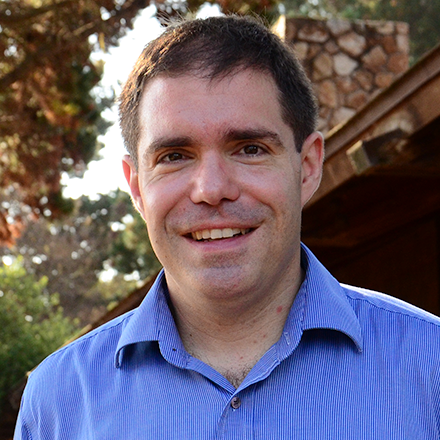
Description:
At least three Solar System planets (Mars, Jupiter, and Neptune) have stable co-orbital asteroids that have shared the same orbit with the planet since the system's early days. We also know that Saturn and Uranus cannot have co-orbital asteroids because these planets are close to orbital resonances with Jupiter and Neptune, respectively. For example, proximity of Saturn to exact 5:2 period ratio with Jupiter makes Jupiter's gravitational perturbations on Saturn's potential co-orbitals very strong, and drives them out of stable configuration. Many known extrasolar planets are in tightly packed systems in which period ratios are close to, but not equal to, simple fractions required for existence of an orbital resonance. In this project we would use numerical simulations to explore how a planet's residence in a crowded, near-resonant system affects the stability of its potential co-orbital companions. If stable, such co-orbital bodies could in principle be observed during transits, either because the companion is itself planet-sized, or is a source of a large dust cloud.
Qualifications:
Experience with classical mechanics above freshman level is preferred, and some computational experience (any high-level programming language) is a requirement.
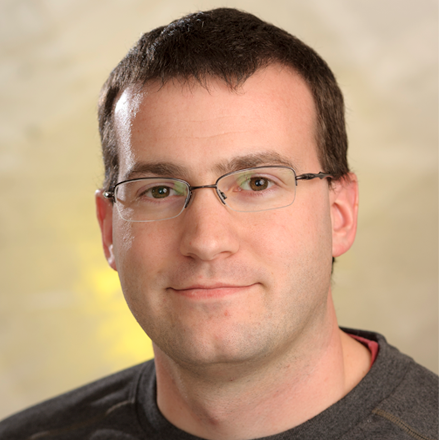
Description:
Yes, this is literally a SETI Institute project to find patterns of lights in the sky! The Geostationary Lightning Mapper (GLM) instruments onboard the GOES 16, 17 and 18 weather satellites are designed to detect lightning, but they can also detect other bright flashes in Earth's atmosphere. We have developed a machine learning based exploding meteor (i.e. bolide) detection pipeline as part of the Asteroid Threat Assessment Project (ATAP) funded by NASA's Planetary Defense Coordination Office (PDCO). With the pipeline running for several years now, we have assembled a vast and unique catalog of bright meteors using a consistent and wide field of view. But we know we are not just finding meteors -- we are finding all kinds of other phenomena as well. What are these signals? Satellites? Rocket launches? Strange lightning? Solar glints? Instrumental artifacts? Alien Spacecraft? Let's explore!
Qualifications:
The ideal student should have a level, critical mind and accept that extraordinary claims require extraordinary evidence. The student should already be familiar with Python and have experience processing large data sets. A basic understanding or a desire to learn more about machine learning, cluster analysis and population statistics is highly desirable.
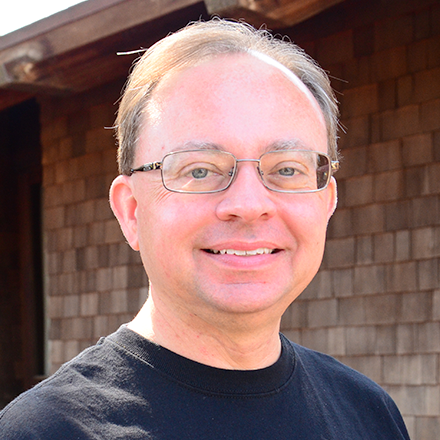
Description:
Saturn's spectacular rings, easily visible from Earth with a backyard telescope, often inspire people to study astronomy. But when viewed up close, the rings reveal a complex and dynamical environment that researchers are still trying to fully understand. The Cassini spacecraft orbited Saturn from 2004 to 2017 and recorded more than 400,000 images; of these, thousands were of Saturn's highly variable F ring (located beyond the main rings and generally invisible from Earth), and most of these have never been fully analyzed. In this project, the student will use existing software tools and develop new tools to analyze these images, catalogue and characterize changes that occurred, analyze orbits and other dynamic properties, and help to develop theories that explain the observations.
Qualifications:
The ideal student will have experience in classical mechanics above the freshman level including orbital dynamics in three dimensions, college-level knowledge of statistical analysis, and substantial Python programming experience. Experience with Jupyter notebooks and matplotlib and use of the command line environment is strongly recommended. When applying for this position, please provide sufficient information so that your programming skills can be evaluated.
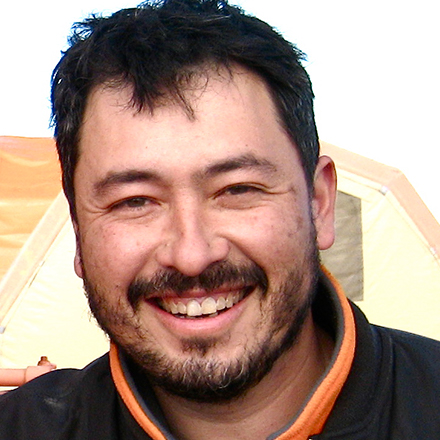
Description:
NASA’s Artemis Program aims to return humans to the Moon, explore the Lunar South Pole, enable a sustainable long-term human presence on the Moon, and prepare the future human exploration of Mars. An anticipated logistical and scientific milestone will be the establishment of a permanent base on the Moon, the “Artemis Base Camp”, to enable long-term and long-range exploration of the Moon from this base. While several candidate sites in the Lunar South Polar regions have been proposed for the Artemis Base Camp, an off-polar site might prove to be more practical, more useful, and safer for long-term lunar exploration, and a better strategic choice for the Artemis Program.
The student will work with Dr Pascal Lee at the SETI Institute to identify candidate sites for the establishment of the Artemis Base Camp in a high southern latitude but off-polar location. Criteria to be applied include site safety and accessibility, solar illumination and Earth visibility, and access routes areas of interest for science and potential resources.
Tools to be used will include the Lunar Reconnaissance Orbiter Camera (LROC) “Quickmap” lunar data display and exploration planning tool, the NASA Ames and JPL “Moon Trek” mapping, modeling, and visualization tool, and “Google Moon”. Lessons in science and exploration operations from Apollo, Antarctica, the NASA Haughton-Mars Project (HMP) in the Arctic, and other relevant experiences, will also be applied.

Description:
Noctis Landing, at approximately 7°21’ S, 93°00’ W on the surface of Mars, is a proposed landing and base site for future human missions to Mars. The site is located between the canyons of Valles Marineris to the East, and the giant volcanoes of Tharsis and their caves to the West. The site is located within a few kilometers from the recently reported remains of a modern Mars glacier, at 7°33’ S, 93°14’ W. The discovery of this Mars “relict glacier” means that humans at Noctis Landing might be able to access H2O ice near the equator, at a location much less frigid than higher latitude sites where H2O ice is normally found on Mars.
The student will work with Dr Pascal Lee at the SETI Institute to identify a landing and exploration area at Noctis Landing for a potential near-future robotic reconnaissance mission, considering a range of options: fixed lander, robotic rover, hopper, and helicopter. Tools to be used will include the Mars Reconnaissance Orbiter “Quickmap” Mars data display and exploration planning tool, the NASA Ames and JPL “Mars Trek” mapping, modeling, and visualization tool, and “Google Mars”. Lessons in science and exploration operations from Apollo, Antarctica, the NASA Haughton-Mars Project (HMP) in the Arctic, and other relevant experiences, will also be applied.
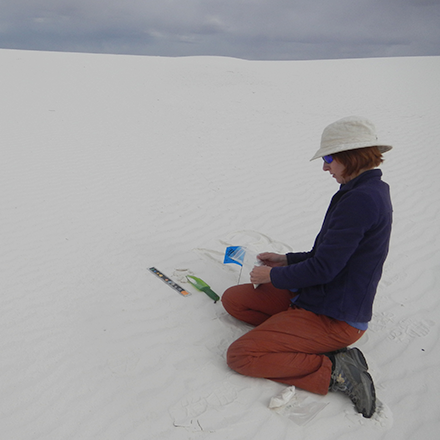
Description:
Dr. Lori Fenton’s research involves studying evidence for recent climate change on Mars, with a focus on aeolian (wind-blown) processes. This includes atmospheric modeling of near-surface wind conditions, morphologic studies of windblown landscapes (e.g., ripples, dunes, yardangs) and phenomena (e.g., dust devils), and analog field studies to better understand how similar features and processes occur on Mars.
Dust devils are swirls of air that loft dust and other small debris off the ground in dry regions on Earth. Unlike tornadoes that form from shear generated during thunderstorms, dust devils seem to appear out of nowhere on warm, cloudless days – however they are actually part of a turbulent and convective atmosphere that only becomes visible when convectively-driven vortices skim the surface and grow strong enough to loft sediment. Dust devils are also common on Mars, where dust is plentiful and the weather is most often clear and convectively buoyant.
What can we learn about environmental controls on Mars dust devils (that is, how tall and wide they grow, how densely packed they are, etc.) by studying those that form on Earth? Can we then use observations of dust devils on Mars to infer local weather conditions? Field campaigns to a Nevada site in 2019 and 2021 produced a vast data set full of dust devil images and the meteorological conditions in which they form. The student will help discover the physical characteristics of these dust devils, answering a subset of a nearly endless list of interesting questions: Where do dust devils preferentially form – on bare playa or alluvial plain? How fast do they move relative to the background wind? Does dust devil width change with location or wind speed? Does the width change with increasing solar energy as the sun rises in the morning? If a dust devil loses its dust and becomes invisible, can it once again pick up energy and reappear downwind?
Qualifications:
Some background in geology or meteorology, as well as Python (or any programming language), is preferred. However, the project can be scaled to the experience level of the student.

Description:
Young stars are surrounded by flat disk-like structures that eventually go on to form planetary systems. These disks are observed to continuously funnel material toward the central star, but for this to happen the material must lose angular momentum. How angular momentum loss and mass transport occurs has been a long-standing puzzle. Magnetically driven outflows are the leading theoretical mechanism, where mass is removed from the disk especially in the planet forming regions. The James Webb Space Telescope is now unraveling this mystery by capturing spectacular images of outflows from the disk. The project will involve using computational models to simulate emission, compare with JWST images and data, and infer the mass loss rates and conditions in the wind emitting regions.
Qualifications:
Physics majors are preferred. Python or high-level programming language, with some computational experience as a requirement.
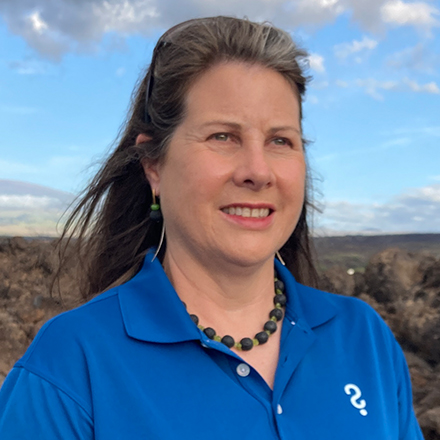

Description:
Dr. Janice Bishop’s research involves characterizing the surface of Mars using hyperspectral visible/near-infrared (VNIR) images of Mars collected by the CRISM spectrometer on board the Mars Reconnaissance Orbiter (MRO) (http://crism.jhuapl.edu/). We are interested in studying the early martian environment through detection of phyllosilicates, sulfates, and other aqueous minerals on the surface of Mars.
Dr. Ginny Gulick’s research involves investigating ancient water-formed features on Mars. Her team uses images acquired by both CTX and the HiRISE cameras on MRO (https://www.uahirise.org) and Digital Terrain Models (DTMs) to analyze the valley networks, channels, paleolakes, gullies, and associated features in 3-D to better understand the environment in which they formed and the implications for potential paleoclimate change on Mars.
Dr. Bishop and Dr. Gulick are seeking a summer intern to study the Mawrth Vallis region of Mars, where abundant phyllosilicates are present, as well as smaller outcrops of poorly crystalline material and sulfates. Specifically, we will be documenting changes in the surface mineralogy and geologic features that describe changes in the ancient climate at Mawrth Vallis. This site lies at the juncture of the southern highlands and northern lowlands of Mars and is cut by a large channel where water once flowed. We hypothesize that the small sulfate outcrops formed during transient changes in climate when sulfates were condensed on the surface.
The student will learn how to collect spectra from CRISM images and compare these with lab spectra of minerals. Additionally, we will measure spectra in the lab of Mars analog rocks and relate these to CRISM spectra of Mars. The student will master how to measure spectra of geologic samples, how to use several image processing techniques, and how to identify different materials based on spectral features (e.g., clays, sulfates, basalt). The student will also learn how to evaluate HiRISE and CTX images and work with DTMs to determine detailed slopes, areas, and volumes of landforms and surfaces to characterize aqueous processes on Mars.
Qualifications:
The ideal candidate would have at least one year each of chemistry, physics, and geology, plus one class each in mineralogy and geomorphology. This project is suitable for a student interested in mineralogy, remote sensing, planetary geology, and geomorphology.
Additional skills: Experience measuring and analyzing the spectral properties of rocks and/or using CRISM spectra of Mars is a plus, but not required. Experience with KaleidaGraph, IDL or ENVI software, working with multiple data sets, and mapping in Arc-GIS would be a bonus.
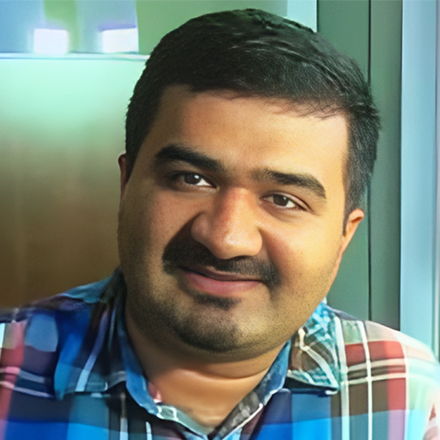
Title: Understanding the 1-10 GHz Narrowband Signal Environment with the GNU radio at the Allen Telescope Array
Description:
The search for extraterrestrial intelligence or technosignatures via radio signals spans the entire accessible radio spectrum as monitored by ground-based instruments. A key focus in this endeavor is on narrowband signals—specifically, those spanning only a few Hz. While numerous radio technosignature projects have explored these signals, a complete understanding of their prevalence and distribution is still lacking. The Allen Telescope Array (ATA) is distinguished as one of the few instruments primarily dedicated to technosignature detection. Considering its critical role, it's vital for the ATA community to gain a deep understanding of the dynamic and evolving radio frequency interference environment, particularly regarding narrowband signals. These signals are of significant interest because they can result in false positives in technosignature searches.
This project involves employing one of the antennas of the ATA, alongside the adaptable GNU Radio software, to thoroughly detect narrowband signals in all directions. The objective is to develop the first exhaustive map of the interference environment across the 1 to 10 GHz range. This unique dataset, unmatched in both its breadth and detail, will be an invaluable asset not just to the ATA community but also to other facilities conducting technosignature research. The insights derived from this study are anticipated to greatly enhance our comprehension of the narrowband signal environment and to improve the methodologies used in the ongoing quest to identify extraterrestrial intelligence.
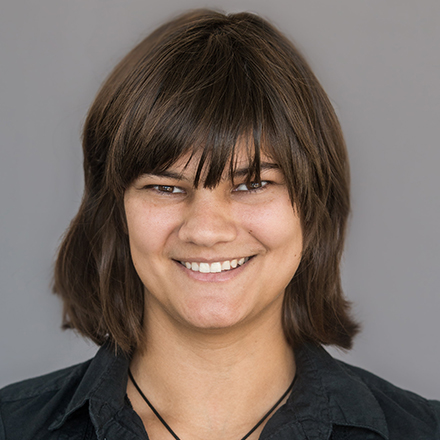
Description:
Radio waves are low-energy, travel at the speed of light, and are not blocked by gas and dust. For these reasons (among many others), it is hypothesized that extraterrestrial intelligences (ETIs) might use radio transmitters to send signals across the galaxy. We might be able to detect these radio “technosignatures” using radio instruments such as the Allen Telescope Array (ATA). In this project, the REU student will select a set of technosignature targets and observe them with the ATA. The student will then use existing software such as turboSETI or BLIPSS to perform a novel, in-depth technosignature search of that target, with the goal of setting the strictest upper limits ever for the chosen target (or detecting ETI!).
The student will complete a discrete observing project over the course of the summer, including planning an observing campaign, executing observations at HCRO, and analyzing data. They will work primarily at the SETI Institute in Mountain View, but will also have the opportunity to travel to Hat Creek Radio Observatory to get hands-on experience with the ATA.
